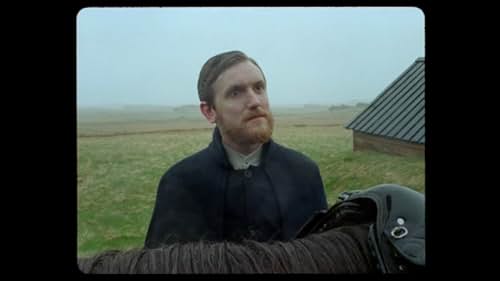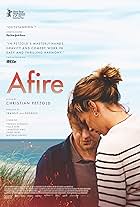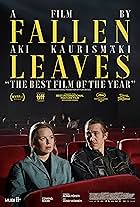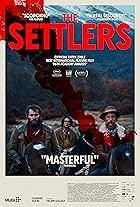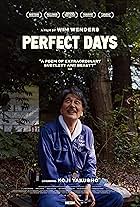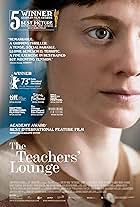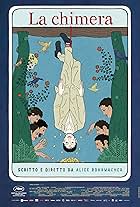IMDb RATING
7.1/10
7.9K
YOUR RATING
At the end of the 19th century, a young Danish priest is sent to a remote part of Iceland. The deeper he travels into the Icelandic landscape, the more he loses a sense of his own reality, h... Read allAt the end of the 19th century, a young Danish priest is sent to a remote part of Iceland. The deeper he travels into the Icelandic landscape, the more he loses a sense of his own reality, his mission and his sense of duty.At the end of the 19th century, a young Danish priest is sent to a remote part of Iceland. The deeper he travels into the Icelandic landscape, the more he loses a sense of his own reality, his mission and his sense of duty.
- Awards
- 18 wins & 43 nominations
Ingvar Sigurdsson
- Ragnar
- (as Ingvar Sigurðsson)
Jacob Lohmann
- Carl
- (as Jacob Hauberg Lohmann)
Friðrik Friðriksson
- Friðrik
- (as Friðrik Snær Friðriksson)
- Director
- Writer
- All cast & crew
- Production, box office & more at IMDbPro
Storyline
Did you know
- TriviaThe title of the film in Danish (Vanskabte Land) Icelandic translates to something more like "wretched land" or perhaps "godforsaken land" rather than "Godland" in the English title,
- GoofsIn one scene a character is seen playing a Scandalli accordion. This is an anachronism: the story takes place at the end of the 19th century while the Scandalli brothers began producing accordions in the early 20th century and the Scandalli company was founded in 1916.
- Crazy creditsSeventeen horses and two dogs are credited as cast or extras. Three horses have 'in memory of' credits.
- ConnectionsReferenced in Radio Dolin: Oscars 2024: The Best Films from around the World (2023)
- SoundtracksDet er hvidt herude
Performed by Vic Carmen Sonne
Lyrics by Steen Steensen Blicher
Composed by Thomas Laub
Featured review
At least twice during this film, the director uses a bold and spectacular cinematographic gimmick. In the shots, lasting several minutes, the camera turns very slowly around in a 360-degree movement. These shots are almost mini-films within the film. In the second one, the camera captures a village wedding party, with musicians, dancers and children playing. Wonderful to look at.
There are more beautiful shots in the film. One shows a dead horse, slowly decaying in a series of identical shots, but filmed in different seasons. Has the director filmed the entire process during a full year? It's possible, there is enough space in the immense expanse of Iceland's remote wilderness.
Apart from the 19th century Danish priest who is the story's protagonist, the Icelandic landscape is really the most important element in the film. In the first part, there really isn't much else. After having arrived by ship, the priest travels on horseback through the barren landscape, accompanied by some taciturn Icelanders. When he arrives at a village in order to build a new church, the story concentrates on the tension between the Icelanders and the priest, who is not only seen as a representative of an oppressive country, but also seems ill-prepared for the physical challenges of the primitive Icelandic lifestyle.
In order to give this simple story an extra dimension, the priest is also a photographer, making portraits of the people he meets. In the 19th century, this was an elaborate process involving eggwhite and silver. The director wants us to believe it is the recent discovery of those photo's, which survived the centuries, that made him reconstruct the priest's journey.
For me, the film ticked several boxes. I have hiked through the Icelandic interior, and yes, the landscape really is amazing. I also like slow cinema, and this is very slow cinema. Thirdly, this film also contains some food for thought about religion. Officially, the Danish priest and the Icelandic villagers share the same religion, but the way they experience it couldn't be more different.
There are more beautiful shots in the film. One shows a dead horse, slowly decaying in a series of identical shots, but filmed in different seasons. Has the director filmed the entire process during a full year? It's possible, there is enough space in the immense expanse of Iceland's remote wilderness.
Apart from the 19th century Danish priest who is the story's protagonist, the Icelandic landscape is really the most important element in the film. In the first part, there really isn't much else. After having arrived by ship, the priest travels on horseback through the barren landscape, accompanied by some taciturn Icelanders. When he arrives at a village in order to build a new church, the story concentrates on the tension between the Icelanders and the priest, who is not only seen as a representative of an oppressive country, but also seems ill-prepared for the physical challenges of the primitive Icelandic lifestyle.
In order to give this simple story an extra dimension, the priest is also a photographer, making portraits of the people he meets. In the 19th century, this was an elaborate process involving eggwhite and silver. The director wants us to believe it is the recent discovery of those photo's, which survived the centuries, that made him reconstruct the priest's journey.
For me, the film ticked several boxes. I have hiked through the Icelandic interior, and yes, the landscape really is amazing. I also like slow cinema, and this is very slow cinema. Thirdly, this film also contains some food for thought about religion. Officially, the Danish priest and the Icelandic villagers share the same religion, but the way they experience it couldn't be more different.
- How long is Godland?Powered by Alexa
Details
- Release date
- Countries of origin
- Official sites
- Languages
- Also known as
- Земля Бога
- Filming locations
- Production companies
- See more company credits at IMDbPro
Box office
- Budget
- €5,000,000 (estimated)
- Gross US & Canada
- $60,735
- Gross worldwide
- $1,560,518
- Runtime2 hours 23 minutes
- Color
- Sound mix
- Aspect ratio
- 1.33 : 1
Contribute to this page
Suggest an edit or add missing content


